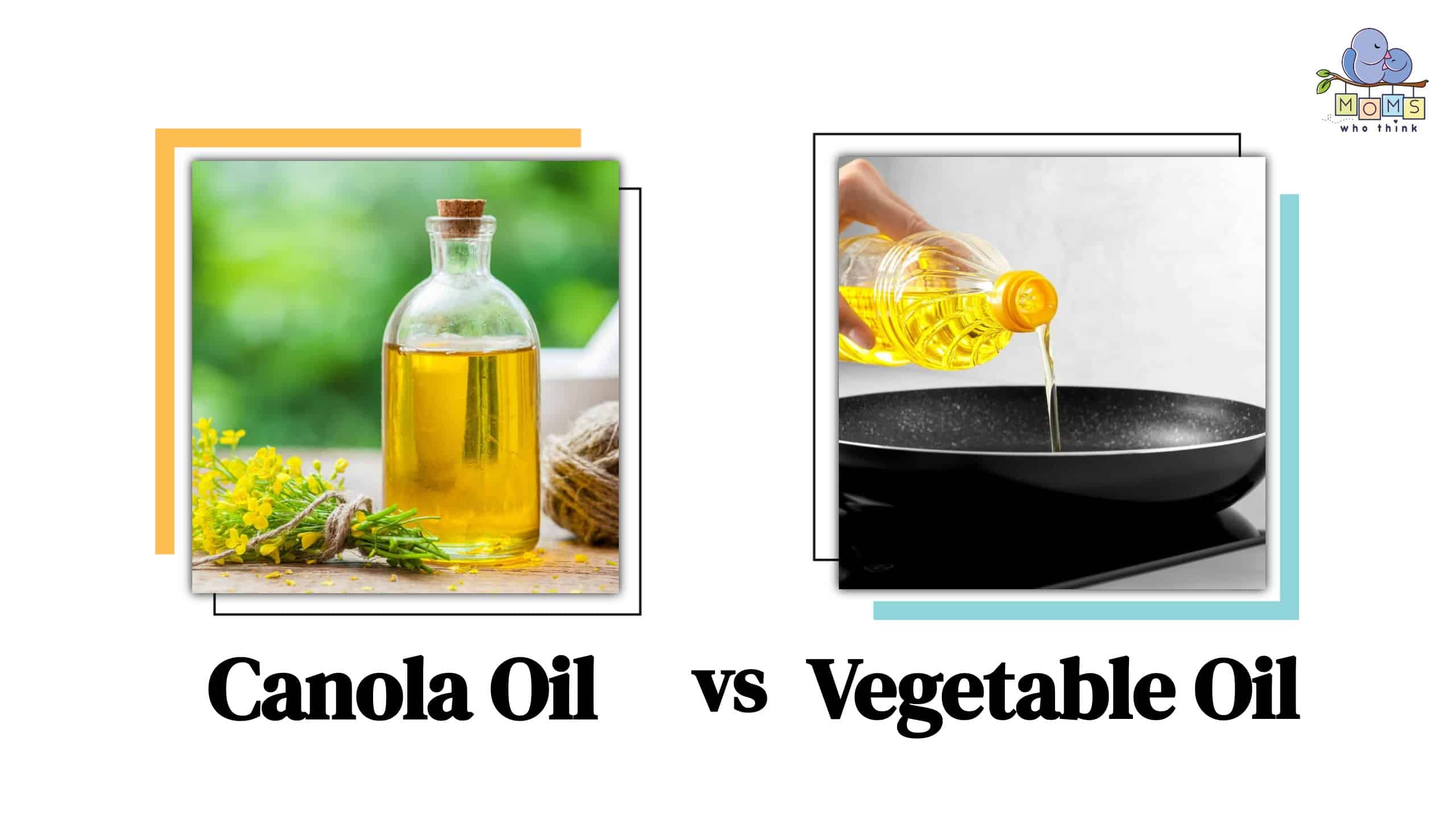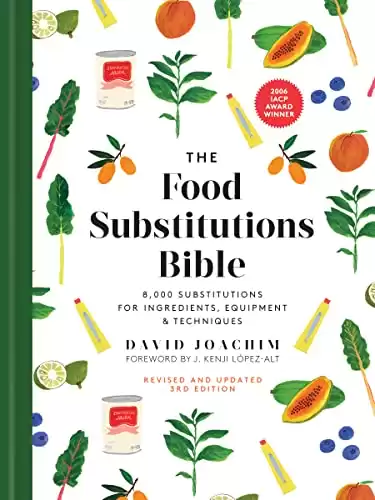Canola oil and vegetable oil are some of the most important ingredients you require when thinking about baking. The two items lack strong taste or scent, making them affordable and suitable for cooking and desserts. Regardless of your preferences, using either oil type for baking will produce similar outcomes.
So, what sets apart these two baking basics? The primary difference between them is their level of fat. Keep reading to know more about the differences between vegetable oil and canola oil to determine which option is more suitable for specific baking applications.
- The must-have convenient reference guide for every home cook!
- Includes more than 8,000 substitutions for ingredients, cookware, and techniques.
- Save time and money on by avoiding trips to grab that "missing" ingredient you don't really need.
Canola Oil and Vegetable Oil: Differences
Vegetable oil and canola oil share a number of similarities. You might more constantly unknowingly interchange containers when they are situated closely within the storage area! The resemblance, taste, price, and heat resistance of these oils are comparable, rendering them suitable for cooking techniques such as frying and baking.
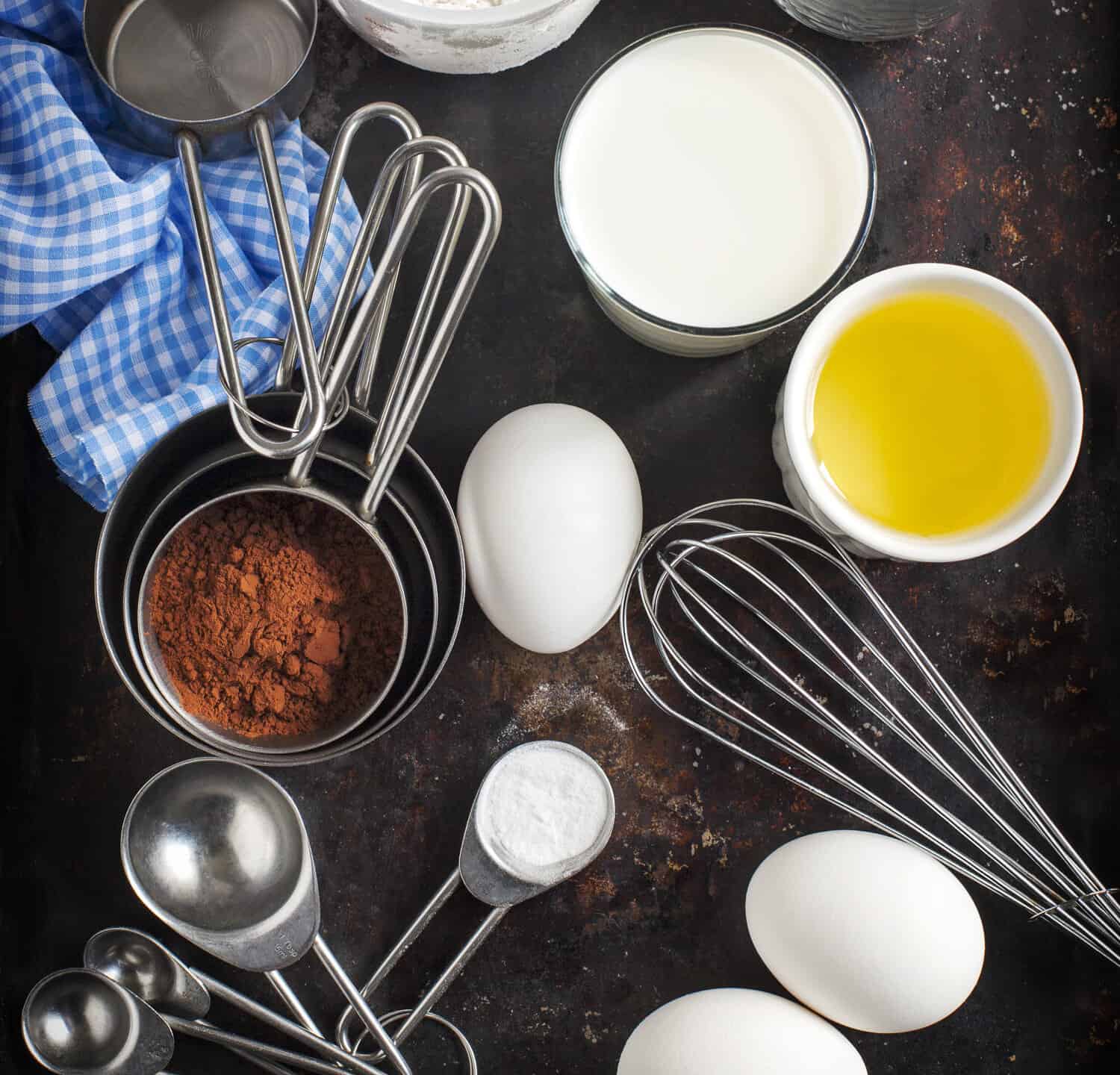
©AnjelikaGr/Shutterstock.com
What sets apart these two oils and what factors influence your selection between them while shopping?
Smoke Point
The point at which oil starts emitting visible smoke is referred to as the “smoke point.” Oils that possess a high smoke point can be used for stir-frying and frying without emitting an unpleasant smoky smell in your cooking area.
The smoke point of canola oil varies between 400 to 450 degrees Fahrenheit depending on its production method, while that of vegetable oil varies between 425 and 460 degrees Fahrenheit, depending on the type or blend of oil. The smoke points exceed typical home cooking temperatures. Deep-frying is typically done at a temperature of 350 degrees Fahrenheit. Consequently, both oils are versatile for cooking purposes.
Flavor
Both vegetable oil and canola oil possess a pleasant and neutral taste. It has been stated that blending vegetable oil with corn oil may result in a darker appearance and a more flavorful taste, but only the vegetable oil blend can alter the taste slightly. Soybean oil is a commonly used vegetable oil. The hue is faint and reminiscent of canola oil.
Use canola or vegetable oil if you prefer oil without flavor. The remaining flavors will be noticeable due to their lack of taste.
Nutrition
There are similarities in the nutrients present in vegetable oil and canola oil. Both edible oils contain minimal fat and have 120 calories per tablespoon. Canola oil has the lowest amount of saturated fat per tablespoon compared to other oils, with only one gram.
Experts suggest selecting oils with elevated levels of unsaturated fats and minimal amounts of saturated and trans fats. Fats that are not fully saturated have been proven to have notable health benefits, such as improving cell function and overall heart health. Canola oil bottles often bear the words “heart-healthy” on their labels for this reason.
Canola oil exhibits minimal saturated fat content in comparison to other vegetable oils while displaying a notable abundance of monounsaturated and polyunsaturated fats, which are deemed beneficial for health. It has the potential to be used diversely in the kitchen.
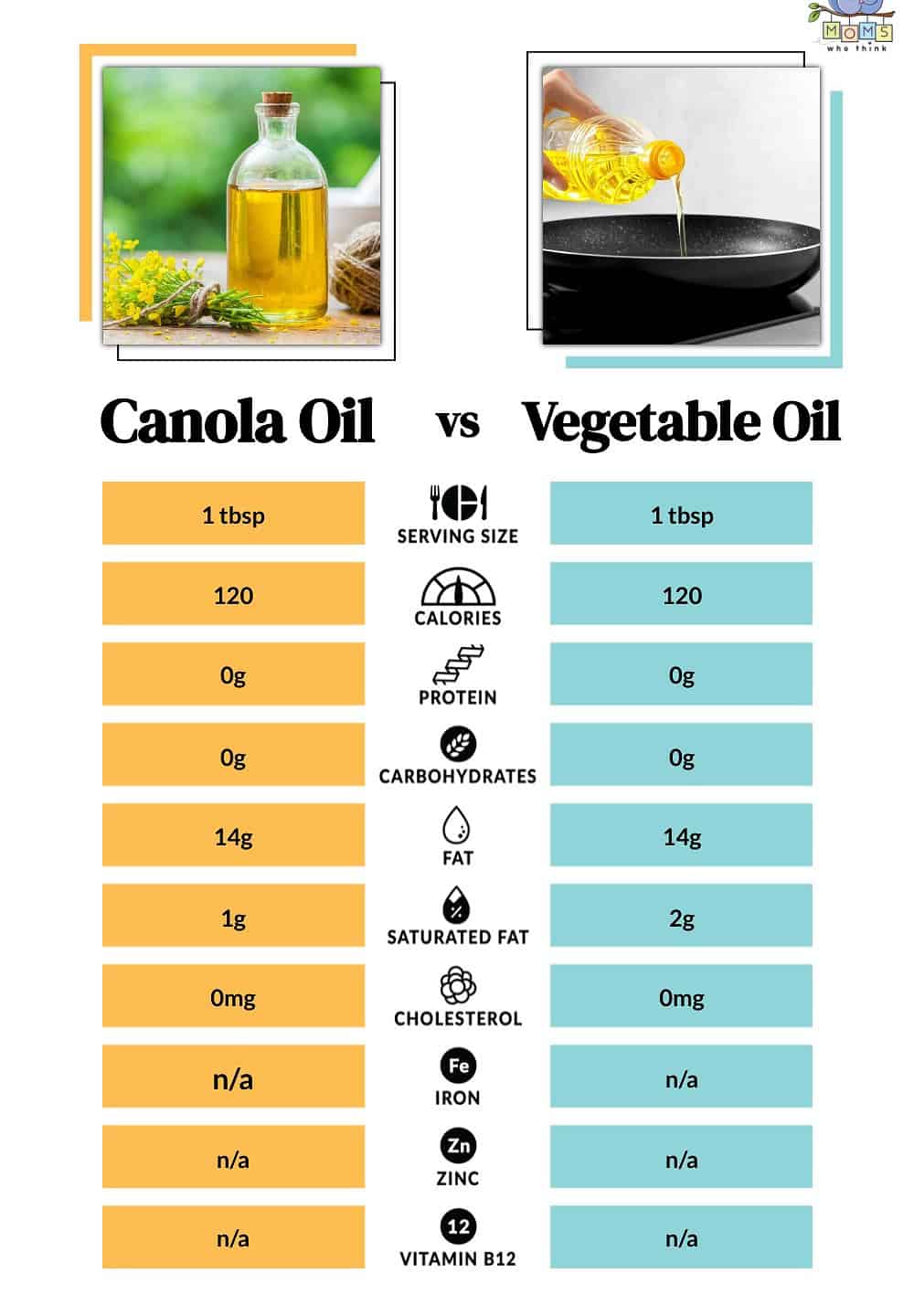
Is Vegetable Oil Good for You?
Although originating from plants (vegetable oil is often extracted from soybeans or a blend of vegetable oils, while canola oil is derived from rapeseed), they possess unique assortments of lipids.
Most people seem to think that canola oil is better than vegetable oil because it has less saturated fat. However, it is known that fats from plants are more advantageous for the heart than those from animals. Canola oil, just like walnut oil, is among the scarce oils that exhibit elevated levels of omega-3 fat ALA, and scientific investigation indicates that it might aid in reducing overall and undesirable LDL cholesterol.
Which is Healthier for You: Vegetable Oil or Canola Oil?
The majority of people believe that plant-based oils are healthier than animal-based fats, although canola oil has less saturated fat than vegetable oil. Moreover, it encompasses elevated omega-3 lipid molecules, which are crucial for your well-being but necessitate acquisition from nourishment.
Salmon is extremely healthy because of this. Therefore, in case of soy allergy or prioritizing health, opt for canola oil. However, using any oil in tiny doses is okay.
Can Canola Oil and Vegetable Oil be Substituted for Each Other?
Yes! If a recipe calls for vegetable oil, you can use canola oil in its place, and the opposite is also true. The final result remains unchanged, regardless of the cooking method employed, such as frying, sautéing, or baking, despite the minor variations in flavor.
For those seeking to avoid saturated fat, canola oil may present a more favorable alternative. In addition, there is an option to select one of the two.
- The must-have convenient reference guide for every home cook!
- Includes more than 8,000 substitutions for ingredients, cookware, and techniques.
- Save time and money on by avoiding trips to grab that "missing" ingredient you don't really need.
What is Canola Oil?
Canola oil is derived from a hybrid variety of plants resulting from the crossbreeding of two separate species. Canadian researchers in the 1970s transformed the rapeseed plant, which has glucosinolates and erucic acid and is toxic, into a consumable form.
Erucic acid makes up 43% of pure rapeseed oil, while canola oil, which is healthy to consume, must have less than 2%. The words “can” and “ola,” which stand for “oil, low acid,” are the origins of the name “canola.”
Because canola oil is neutral, it doesn't have a distinctive flavor. It has the potential to expedite culinary processes or in instances where additional taste is undesired. The composition comprises lower levels of saturated fat, reduced trans fats, and increased monounsaturated fat in comparison to several plant-based oils, all of which may have a positive impact on your cardiovascular system.
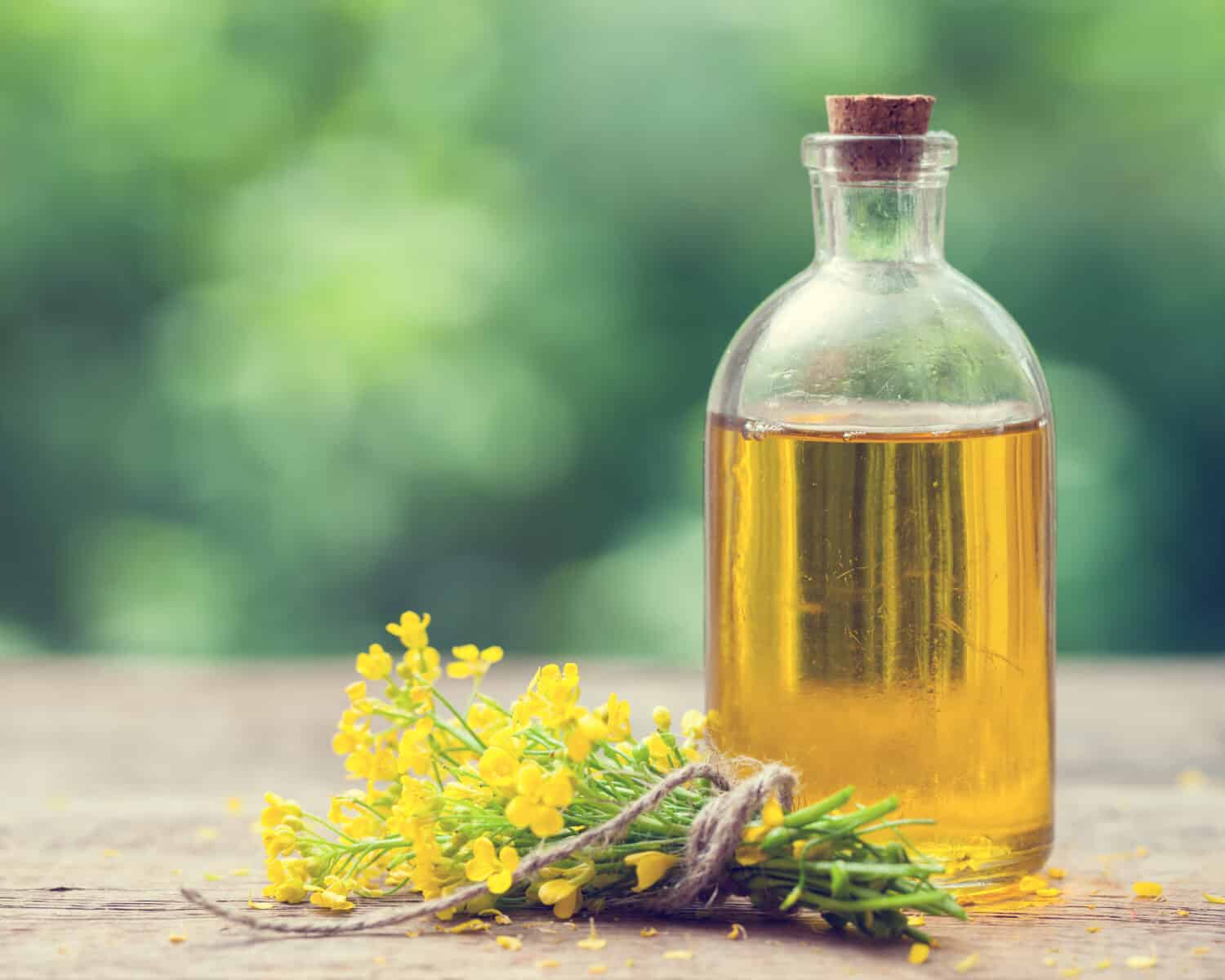
©Chamille White/Shutterstock.com
Vegetable Oil: What Is It?
Plant-based, or vegetable oil is, precisely stated, any oil derived from seeds or other fruit segments. “Plant-based oils” encompass canola oil, soybean oil, grapeseed oil, olive oil, and avocado oil.
Vegetable oils possess elevated smoke points, mild taste, and impartiality. The health benefits differ based on the constituents of the vegetable oil. As an example, most vegetable oils available in retail stores are produced by blending corn oil and soybean oil. Many vegetable oils made from soybeans contain minimal amounts of saturated fats and do not have trans fats. On the other hand, canola oil has the least amount of saturated fats among vegetable oils.
Uses of Vegetable Oil
Canola oil is one of many vegetable oils that have a neutral flavor and are versatile. It can therefore be used for a variety of cooking methods:
1. Deep-frying: Vegetable oils work well for deep-frying a variety of foods. Before the oil begins to smoke, which taints food and causes it to taste bad, it can endure high heat for a considerable amount of time.
2. Sautéing involves transferring heat from the pan to the food. A thin layer of oil is typically used to prevent food from adhering to the pan, promote heat circulation, and brown the tops of meat and vegetables. In vegetable oil, ingredients for stir-fries can be prepared fast and effectively. Except for stir-frying, most pan and burner-based cooking can be done with vegetable oils.
3. Baking: The majority of vegetable oils are suitable for use in baking. Because of its mild flavor, vegetable oil is a wonderful choice for pancakes, pastries, and other sweets. Cooked foods remain wet because of the fat in vegetable oil.
4. Grilling: Canola and vegetable oils have high smoke points, making them ideal for grilling food without burning or drying it out.
5. Salad dressings: You can substitute canola oil or vegetable oil for extra virgin olive oil in your salad dressing base if you run out.
Can Canola or Vegetable Oil be Used in Place of Butter?
When sautéing or pan-frying, butter can be replaced with vegetable or canola oil in several recipes. This may be a more effective strategy to reduce saturated fat. These oils are a viable substitute for butter in baking but are most effective when utilized in recipes that require melted butter.
In order to achieve the desired form of cakes and cookies, it is common to blend butter and sugar together. When following these recipes, exchanging butter with oil may not yield optimal outcomes. Use 0.75 times the amount of oil in the butter as per the recipe.
Is it Possible to Mix Canola Oil and Vegetable Oil?
It is possible to merge these two oils while also alternating between them. Despite the absence of the necessity to mix canola and vegetable oils when cooking, you don't have to discard the food item in case of the sole availability of one of the oils. Furthermore, it is possible to increase the utility of a high-grade oil container by using these impartial oils to hide the taste of more pungent oils such as sesame or olive. When frying, blend canola or vegetable oil with a different oil that has a comparable smoke point.
Other Beneficial Oils
You don't have to limit yourself to canola and vegetable oil when cooking. The following are some additional plant-based beneficial oils.
Avocado Oil
Avocado oil exhibits high resistance to heating. This suggests optimal suitability for the purposes of baking, browning, and frying. Avocado oil comprises significant amounts of monounsaturated fats and also has a presence of polyunsaturated fats, albeit in slightly lesser quantities.
The cost of avocado oil may be substantial as a few avocados are necessary to generate a small amount of oil. Nevertheless, it possesses an exceptional and impartial taste that renders it perfect for mixing with vegetables for roasting, incorporating into soups, or smearing over fish or chicken prior to baking.
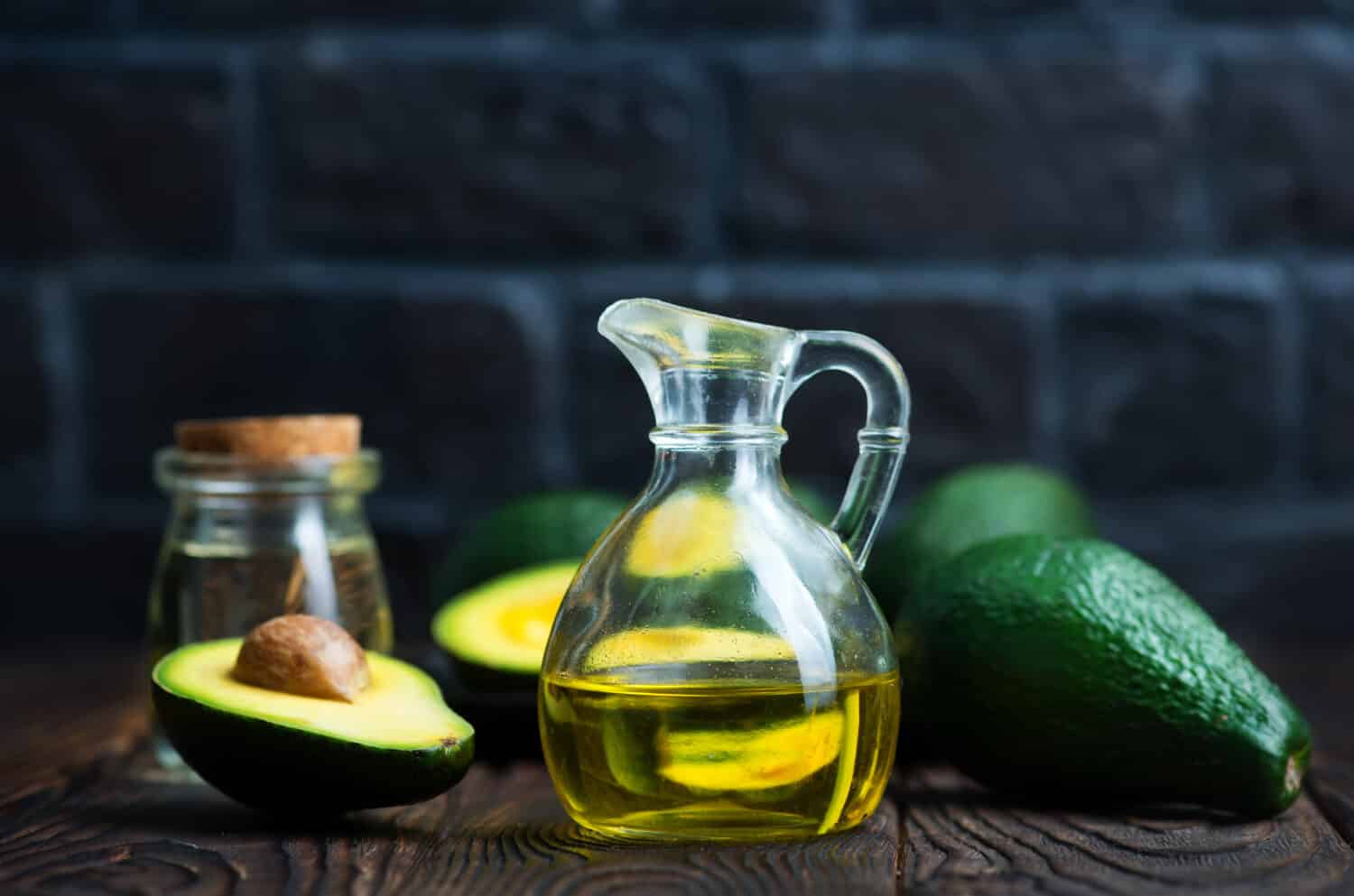
©Gayvoronskaya_Yana/Shutterstock.com
Olive Oil
Olive oil is a wise choice as it is deemed one of the most healthy oils available for purchase. It comes from the bountiful produce of the venerable olive plant. Olive oil is primarily composed of monounsaturated fats that have the potential to mitigate the likelihood of cardiovascular diseases. Blood sugar regulation may be aided by their potential assistance.
Equal creation of olive oil is not a universal truth. As per the report of CBS News in 2016, it has been discovered that a considerable amount of Italian olive oil available in retail stores is counterfeit. Reports recommend procuring olive oil via the Internet, directly from Italian producers. It is highly recommended that one peruses the labels with utmost care to ascertain the origin of the product hailing from olive oil-producing Italian towns, such as Sicily or Puglia.
Substitution of vegetable oil with olive oil in marinades or dressings is a viable option, and it can also be sautéed over low to medium heat. The smoke point of olive oil being low, it is not recommended for use in recipes that need high heat. The flavor of olive oil is quite potent, making it an unsuitable option for baked goods.
Flaxseed Oil
Flaxseed oil possesses the capability to induce laxative effects, thereby potentially aiding in the alleviation of constipation. There exists certain evidence that suggests the possibility of a reduction in cholesterol levels and a decrease in the likelihood of heart disease, however, further investigation is required to confirm these findings.
The stability of flaxseed oil under heat is questionable. The substitution of this oil as a vegetable oil alternative in recipes that require heat for cooking is not recommended. Incorporating it within marinades and dressings for salads is a possibility. The potentiality of its greatness lies in its ability to be drizzled over grilled vegetables or any other cooked foods prior to serving.
Coconut Oil
Despite the abundance of saturated fats in coconut oil, it elevates HDL levels within the body. Due to its ability to decrease unhealthy high cholesterol levels, HDL is frequently referred to as an individual's “beneficial” cholesterol.
Nevertheless, due to the high concentration of dense lipids in coconut oil, the majority of healthcare experts suggest using it in moderation. Coconut oil is recommended for cooking and baking at lower temperatures due to its moderate smoke point.
Peanut Oil
Resveratrol, a cancer and heart disease preventive, is abundantly found in the delicious oil called peanut oil. This substance comprises a suitable proportion of monounsaturated and polyunsaturated fats.
This food item is suitable for various cooking methods such as stir-frying, baking, and oven cooking due to its moderate smoke point.
Sesame Oil
Sesame oil performs optimally with minimal or no cooking due to its superior blend of monounsaturated and polyunsaturated fats compared to alternative oils. For nutrient preservation, incorporation into uncooked dishes such as salads is recommended.
CBD Oil
Low in calories and high in energy, medium chain triglycerides (MCT) oil is a type of food oil. As a result, several athletes use MCT oil to improve their performance.
However, if a person only wishes to use MCT oil by the tablespoon, they should begin with minimal doses. Eating too much at once is associated with being unwell.
If you want to maintain the flavor from deteriorating, don't heat the oil past 150 to 160 degrees. People enjoy using MCT oil as a salad dressing and are presumably relieved that they don't need to keep an eye on the oil's temperature when cooking it.
How to Store Your Cooking Oil Correctly

©Marian Weyo/Shutterstock.com
No matter the sort of oil you use, you must preserve your bottles appropriately. Keep your oil in a cold, dark area if you can. Buy smaller bottles of vegetable or canola oil if you don't use a lot of it to avoid wasting any. Oil can oxidize and turn sour if it is kept for an excessively long time. Don't use your oil if you can detect a nasty odor in it.
Vegetable oil and canola oil are extremely similar. Both oils are suitable for a variety of cooking methods, including baking, because they have a medium-high smoke point and no taste. Compared to other oils, canola oil has a little less heavy fat. You can simply substitute one for the other in recipes and not notice a difference.
A Quick Comparison of Canola Oil vs. Vegetable Oil for Baking
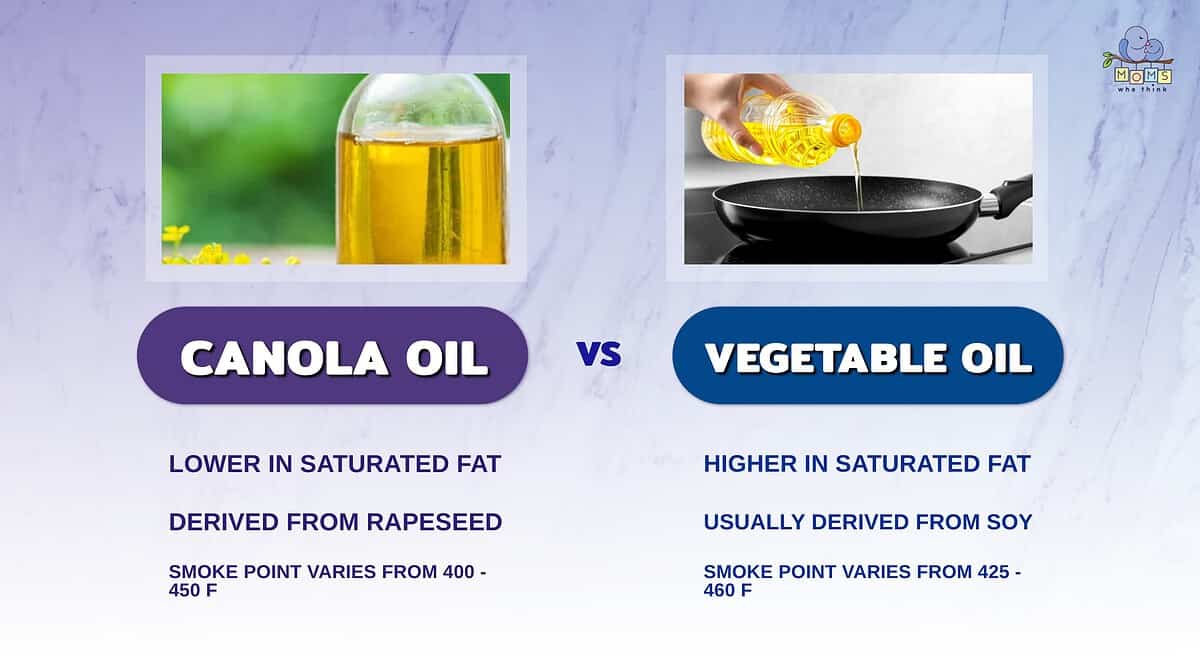
Many recipes call for vegetable oil. In a pinch, canola oil can be swapped with vegetable oil. Both oils have a neutral flavor profile, so they won't alter the taste of the food you're trying to prepare. The high smoke point of these oils means that they can be used for a variety of cooking needs without causing your kitchen to fill with smoke. Canola oil comes from rapeseed, while vegetable oil typically comes from soy. If managing your saturated fat is of the utmost importance to you, choose canola oil.
Which oil do you have in your pantry? If you have vegetable oil on hand, try this Mini Double Glazed Pumpkin Loaves recipe:
PrintMini Double Glazed Pumpkin Loaves with Vegetable Oil
- Yield: 6 mini loaves 1x
Ingredients
3 1/2 cups all-purpose flour
2 teaspoons baking soda
1 teaspoon salt
1 teaspoon ground cinnamon
1 teaspoon ground nutmeg
1/2 teaspoon ground ginger
1/2 teaspoon ground cloves
1/2 cup vegetable oil
1/2 cup apple sauce
1 1/2 cups sugar
1/2 cup packed brown sugar
4 eggs
1 (15 ounce) can pumpkin puree or fresh pumpkin puree
Sugar Glaze Ingredients:
1 1/2 cups powdered sugar plus 1 1/2 Tablespoons powdered sugar
4 Tablespoons whole milk
Spiced Glaze Ingredients:
1 cup powdered sugar plus 3 Tablespoons powdered sugar
2 Tablespoons whole milk
1/4 teaspoon ground cinnamon
1/8 teaspoon ground nutmeg
1 pinch ginger
1 pinch ground cloves
Instructions
1. Preheat the oven to 350°F. Grease and flour pans.
2. In a large bowl, combine flour, baking soda, salt, cinnamon, nutmeg, ginger, and cloves; set aside.
3. In the bowl of a stand mixer, combine the oil and apple sauce.
4. To the oil mixture, add the sugars, mixing until combined.
5. Add the eggs, one at a time, mixing until combined.
6. Mix in the pumpkin until thoroughly combined. Scrap down the sides to be sure it’s all incorporated.
7. Add half of the flour mixture and mix until just combined, be careful not to over mix.
8. Add the remaining flour until no streaks of flour remain.
9. Divide the mixture evenly among the prepared baking pans.
10. Bake the mini loaves for 20 minutes. Rotate the pans, front to back, and bake for an additional 20 minutes, until a toothpick inserted in the center comes out clean. Bake the larger loaves for 25 minutes, rotate, and 25 additional minutes. Allow to cool before topping with glaze.
11. While the loaves bake, prepare both glazes. In two separate small bowls, whisk together all ingredients for each glaze.
12. When the loaves have cooled, brush the sugar glaze over top of each loaf. Then drizzle with the spiced glaze.
